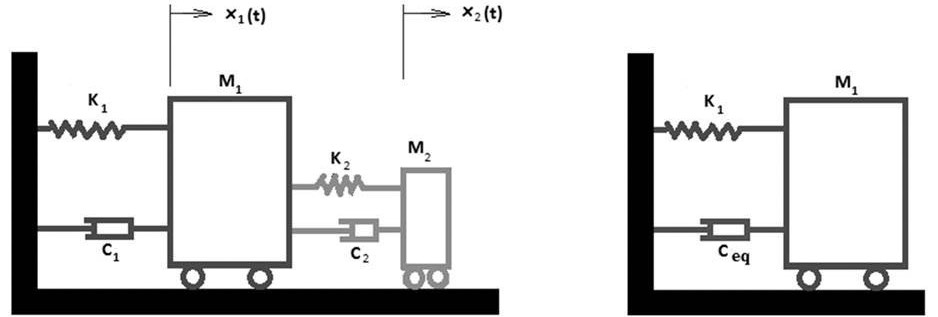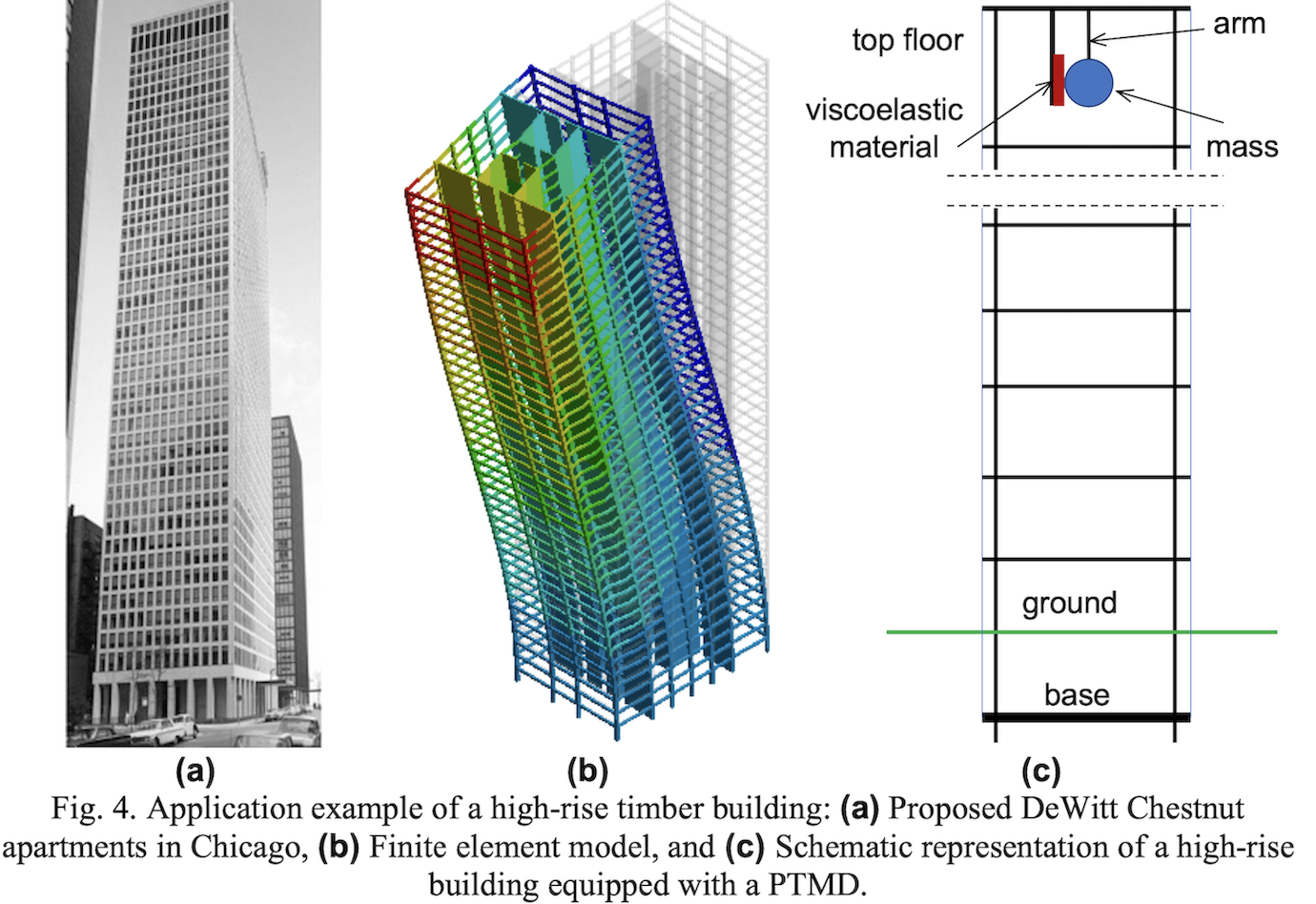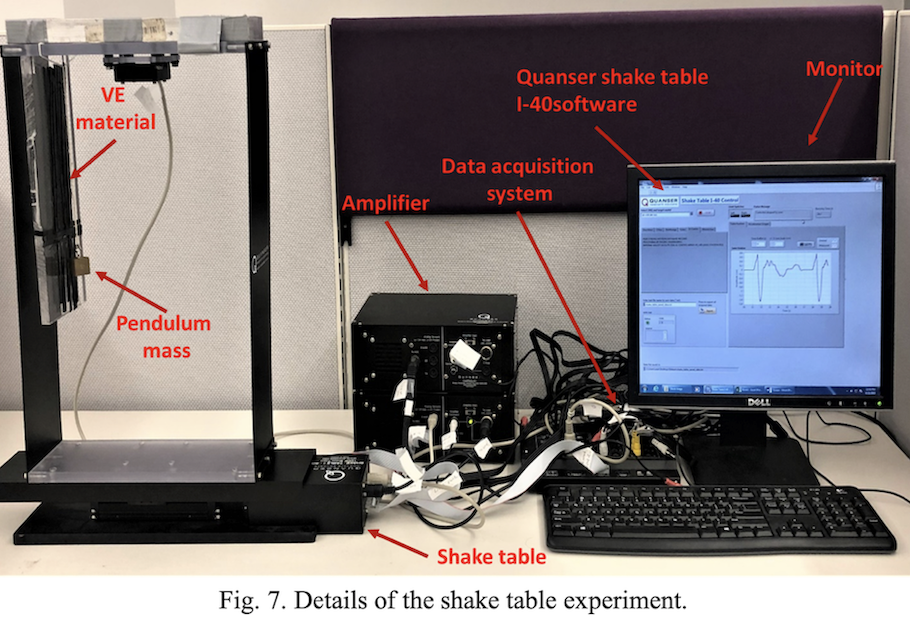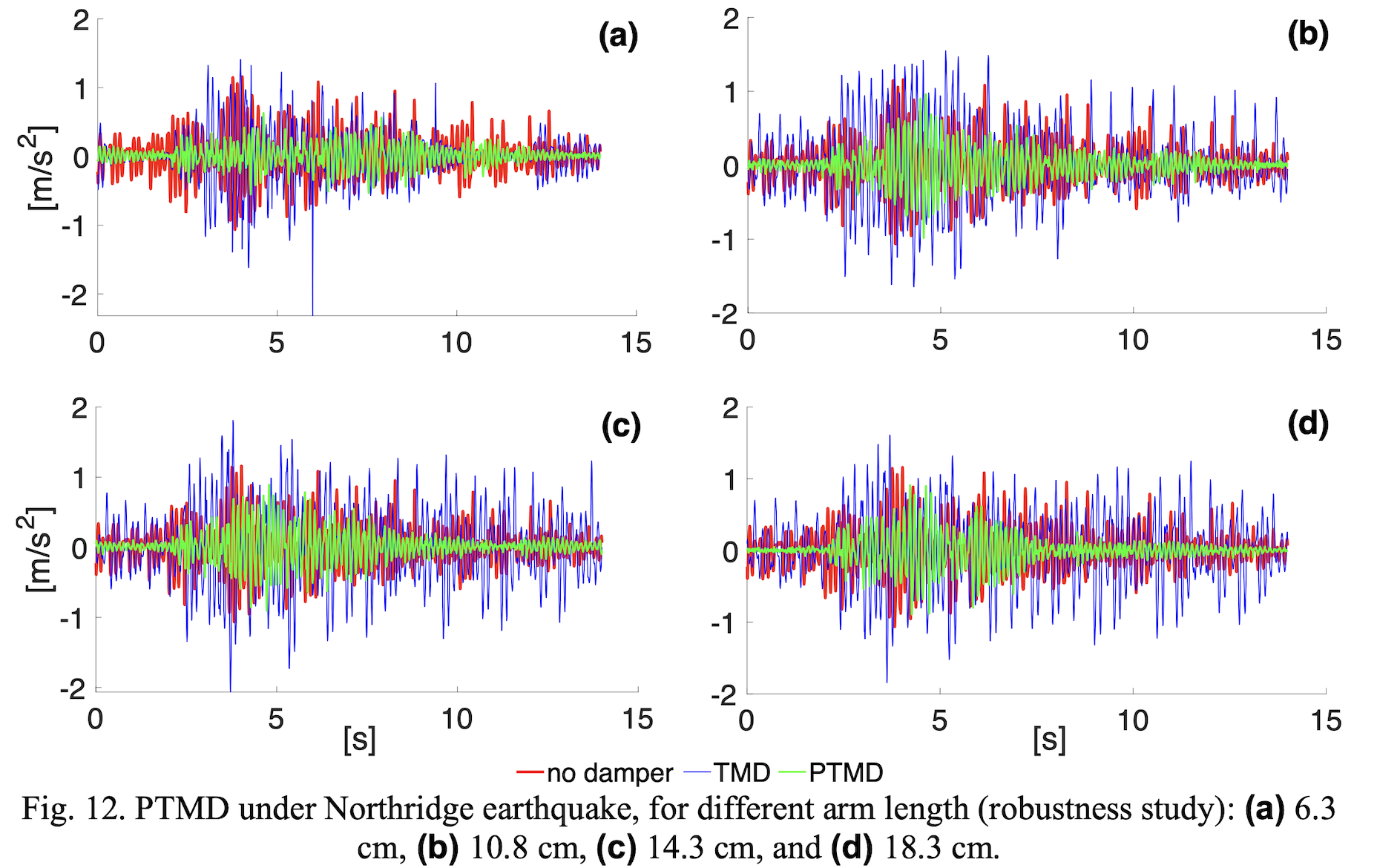⚙️ Robust and Advanced Tuned Mass Dampers for Multi-Hazard Resilience
Flexible structures, such as high-rise buildings and wind turbines, are highly susceptible to performance degradation caused by natural frequency variations, often induced by wind speed, temperature, or humidity fluctuations. The WISE Research Lab is addressing this challenge by developing robust design methodologies for Tuned Mass Dampers (TMDs) and introducing novel devices for superior vibration attenuation under multi-hazard loads.
The Challenge of Robust TMD Design
Traditional TMDs are sensitive to detuning when the primary structure's properties deviate from optimal design assumptions. Our research focuses on developing a robust TMD design approach that explicitly accounts for structural uncertainties, comprehensive optimization objectives, and varying input excitations (wind or earthquake).
Key Design Principles
- Addressing Uncertainty: Predetermined optimal parameters for a primary structure with uncertainties are essential for ensuring design robustness. Our proposed analytical approach has demonstrated remarkable effectiveness in reducing the response of tall buildings to multi-directional wind loads.
- Enhanced Performance: The research shows that incorporating advanced control logic, such as Linear Quadratic Gaussian (LQG) and Fuzzy Logic Controllers, can significantly improve the performance and adaptability of TMD systems.
- Lever Mechanism Insight: Our analysis of damping devices has revealed that smaller, strategically placed devices can achieve higher response reductions, enhancing both structural and nonstructural damage mitigation in high-rise buildings.
Introducing the Pendulum Pounding TMD (PTMD)
A primary focus of our innovation is the Pendulum Pounding Tuned Mass Damper (PTMD), a novel device designed for superior performance, particularly during high-magnitude seismic events where conventional TMDs may be overwhelmed or detuned.
Theoretical Development and Mechanism
The PTMD is an adaptation of the conventional TMD that incorporates a pounding surface composed of a viscoelastic material, allowing for effective energy dissipation based on the Hertz contact law.
- Analytical Modeling: Using the Lagrangian method, we model the structural system equipped with the PTMD. Our studies confirm that the device's tuning frequency ratio can be obtained analytically, providing a reliable basis for design.
- Robustness Verified: Shake table experiments on small-scale building models have verified the PTMD's greater robustness and effectiveness in reducing acceleration responses across a wider range of frequencies compared to traditional TMDs, which may amplify responses when detuned.
Comparative Studies and Advanced Applications
To demonstrate the PTMD's capabilities, we have conducted detailed comparative studies against other contemporary control devices in cutting-edge structural systems.
High-Rise Hybrid-Timber Buildings
Recent advancements in engineered timber have led to the construction of taller, more flexible buildings prone to excessive vibrations. We performed a rigorous comparative study on a 42-story hybrid-timber building, evaluating the performance of our novel device against other common damping systems:
- Pendulum Pounding TMD (PTMD): As a novel passive/hybrid system, the PTMD demonstrated superior performance in reducing peak accelerations, base shear, and inter-story drift ratio when subjected to critical earthquake loads.
- Tuned Mass Damper Inerter (TMDI): Our analysis showed that the TMDI (a hybrid passive system) often experienced a shift in its optimum frequency due to the inerter coupling, frequently leading to reduced performance compared to the PTMD.
- Conventional Tuned Mass Damper (TMD): The traditional TMD (a passive system) was found to be significantly less effective in vibration attenuation under seismic excitation in this modern structural typology.
The dominance of the PTMD in this hybrid-timber environment supports its critical role in advancing sustainable, resilient infrastructure and contributing to climate change adaptation efforts.





Relevant Publications
-
Aly, A.M., Chapain, S. (2023), "Experimental Verification of a Pendulum Pounding Tuned Mass Damper for Seismic Response Reduction," Soil Dynamics and Earthquake Engineering, Accepted.
-
Chapain, S., Aly, A.M. (2023), "Vibration Attenuation in a High-Rise Hybrid-Timber Building: A Comparative Study," Applied Sciences, 2023, 13(4), 2230. https://doi.org/10.3390/app13042230 Chapain, S., Aly, A.M., (2021), "Vibration attenuation in wind turbines: A proposed robust pendulum pounding TMD," Engineering Structures 233, 111891. https://doi.org/10.1016/j.engstruct.2021.111891
-
Aly, A.M., Gol-Zaroudi, H., Rezaee, M. (2021), "A Framework for Vibration Attenuation in Traffic Mast Arm Structures under Wind Loads," Experimental Techniques. https://doi.org/10.1007/s40799-021-00495-9
-
Zucca, M., Longarini, N., Simoncelli, M., Aly, A.M. (2021), "Tuned Mass Damper Design for Slender Masonry Structures: A Framework for Linear and Nonlinear Analysis," Applied Sciences 11 (8), 3425. https://doi.org/10.3390/app11083425
-
Aly, A.M., Rezaee, M. (2021), "Accelerated Controller Tuning for Wind Turbines Under Multiple Hazards," Journal of Energy and Power Technology 3(1), 1-31. doi:10.21926/jept.2101011
-
Xie, F., Aly, A.M. (2020), "Structural Control and Vibration Issues: A Review," Engineering Structures, 210(May), 110087. https://doi.org/10.1016/j.engstruct.2019.110087
-
Chapain, S., Aly, A.M. (2019), “Vibration Attenuation in High-Rise Buildings to Achieve System-Level Performance under Multiple Hazards,” Engineering Structures, 197(15), 109352. https://doi.org/10.1016/j.engstruct.2019.109352
-
Rezaee, M., Aly, A.M. (2018), "Vibration Control to Achieve Desired System-Level Performance under Single and Multiple Hazard Loadings," Structural Control and Health Monitoring, 25(12), e2261. https://doi.org/10.1002/stc.2261
-
Aly, A.M. (2016), "The Use of Bracing Systems with MR Dampers in Super Tall Buildings", International Journal of High-Rise Buildings (IJHRB), 5(1), 31-41. https://global.ctbuh.org/resources/papers/download/2737-the-use-of-bracing-systems-with-mr-dampers-in-supertall-buildings.pdf
-
Aly, A.M., (2015), "Control of wind-induced motion in high-rise buildings with hybrid TM/MR dampers", Wind and Structures, 21(5), 565-595. https://doi.org/10.12989/was.2015.21.5.565
-
Aly, A.M. "Vibration control of high-rise buildings for wind: a robust passive and active tuned mass damper," Journal of Smart Structures and Systems, Volume 13, Number 3, March 2014, pages 473-500. DOI: http://dx.doi.org/10.12989/sss.2014.13.3.473
- Aly, A.M. "Proposed robust tuned mass damper for response mitigation in buildings exposed to multidirectional wind," The Structural Design of Tall and Special Buildings, 2012. https://doi.org/10.1002/tal.1068